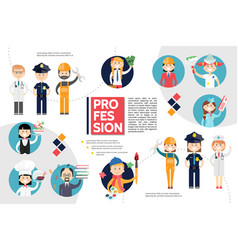Essential Seasonal Aspects Of Commercial Exterior Paint: What You Should Understand
Essential Seasonal Aspects Of Commercial Exterior Paint: What You Should Understand
Blog Article
Team Author-Burnham Decker
When you're preparing an industrial external paint job, seasonal factors can make or break your outcomes. You'll wish to think about just how temperature and moisture effect paint application and drying times. Choosing https://professional-painters-nea65320.blog-kids.com/34564364/are-you-excited-to-find-out-insider-strategies-for-working-sympathetically-with-home-painters-making-your-painting-job-a-smooth-and-pleasurable-process can ensure your paint sticks correctly and lasts longer. Yet which seasons are absolutely the most effective for this type of work? Let's check out the crucial elements that can affect your project's success.
The Influence of Temperature Level on Paint Application
When you're planning a business outside paint project, the temperature level can significantly influence exactly how well the paint sticks and dries out.
Ideally, you want to repaint when temperature levels vary between 50 ° F and 85 ° F. If it's too cold, the paint might not treat correctly, causing concerns like peeling off or cracking.
On the other side, if it's also hot, the paint can dry too promptly, preventing correct bond and resulting in an irregular surface.
You should also think about the time of day; early morning or late afternoon provides cooler temperature levels, which can be much more desirable.
Always check the supplier's suggestions for the details paint you're utilizing, as they often give advice on the suitable temperature range for optimum outcomes.
Moisture and Its Effect on Drying Times
Temperature isn't the only ecological factor that affects your industrial outside paint project; humidity plays a substantial role too. High humidity levels can reduce drying out times drastically, influencing the total top quality of your paint task.
When the air is saturated with moisture, the paint takes longer to treat, which can lead to issues like bad attachment and a greater risk of mold development. If you're repainting on an especially moist day, be prepared for prolonged wait times between coats.
It's important to keep an eye on neighborhood climate condition and plan as necessary. Ideally, go for moisture degrees between 40% and 70% for ideal drying.
Maintaining these factors in mind guarantees your project stays on track and supplies a long lasting finish.
Best Seasons for Commercial Outside Painting Projects
What's the very best time of year for your industrial external paint jobs?
Spring and very early loss are generally your best options. During these periods, temperature levels are light, and moisture levels are often lower, creating excellent problems for paint application and drying.
Stay clear of summer's intense heat, which can create paint to dry too rapidly, leading to bad bond and coating. Similarly, winter months's cold temperatures can prevent appropriate drying out and treating, risking the longevity of your paint task.
Go for days with temperatures between 50 ° F and 85 ° F for ideal outcomes. Keep in mind to inspect the neighborhood weather report for rainfall, as damp conditions can spoil your project.
Preparation around these variables guarantees your paint job runs smoothly and lasts much longer.
Final thought
To conclude, planning your commercial external paint jobs around seasonal considerations can make a significant distinction in the outcome. By scheduling job throughout the ideal temperature levels and humidity degrees, you'll ensure much better adhesion and drying out times. should i paint my ceiling and walls the same color white in mind to watch on neighborhood weather report and choose the correct time of year-- spring and very early autumn are your best options. Taking these steps will assist you achieve a durable and expert surface that lasts.
